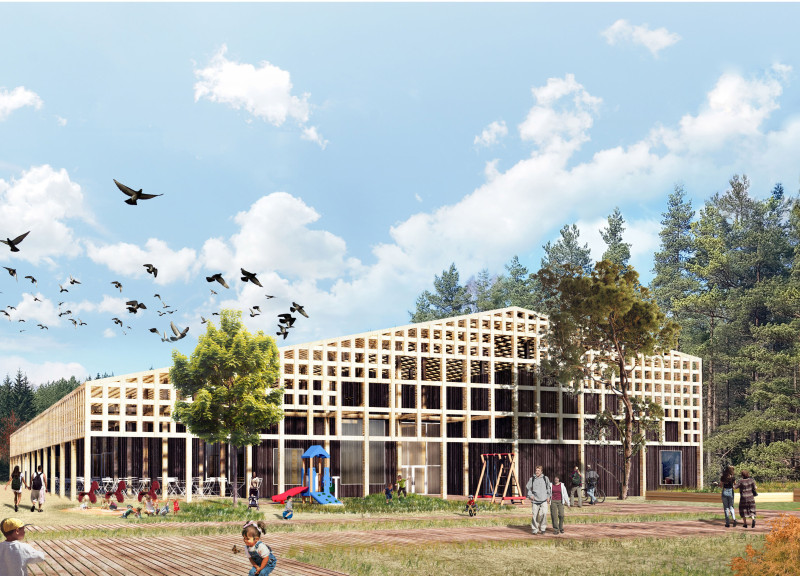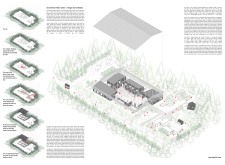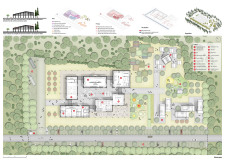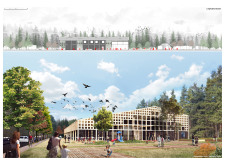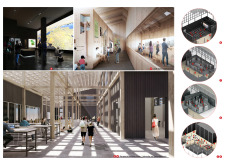5 key facts about this project
Functional Spaces and Design Approach
The visitor center's design incorporates several functional spaces, including exhibition areas, administrative offices, and recreational facilities. These spaces are arranged to evoke the imagery of a village, with buildings that reflect traditional Latvian architecture. The project fosters a strong indoor-outdoor connection through extensive use of glass, allowing natural light to penetrate the interiors.
One notable aspect of the design is the grid-based roof structure, which adds a unique architectural feature to the center. This roof not only provides shelter but also serves an aesthetic function, reinforcing the center's identity. The layout encourages visitors to engage with the surrounding landscape, integrating terraces and outdoor areas that promote interaction with nature.
Sustainable Material Choices
Material selection plays a crucial role in the architectural design. Wood, a principal material, emphasizes warmth and aligns with local building traditions. Its use throughout the interior creates a welcoming atmosphere. Glass elements enhance transparency and maintain visual links with the outdoors, while concrete is utilized for structural integrity.
Incorporating sustainability as a core principle, the project encourages environmental stewardship. The design promotes education through interactive exhibition spaces, highlighting local flora and fauna within the visitor center. This educational focus not only serves to inform visitors but also instills a sense of responsibility toward the preservation of the natural environment.
For those seeking deeper insights into the architectural plans, sections, designs, and ideas, further exploration of the project presentation is encouraged. Understanding these elements will provide a comprehensive view of how the Great Kemeri Visitor Center meets its functional, educational, and environmental objectives.


